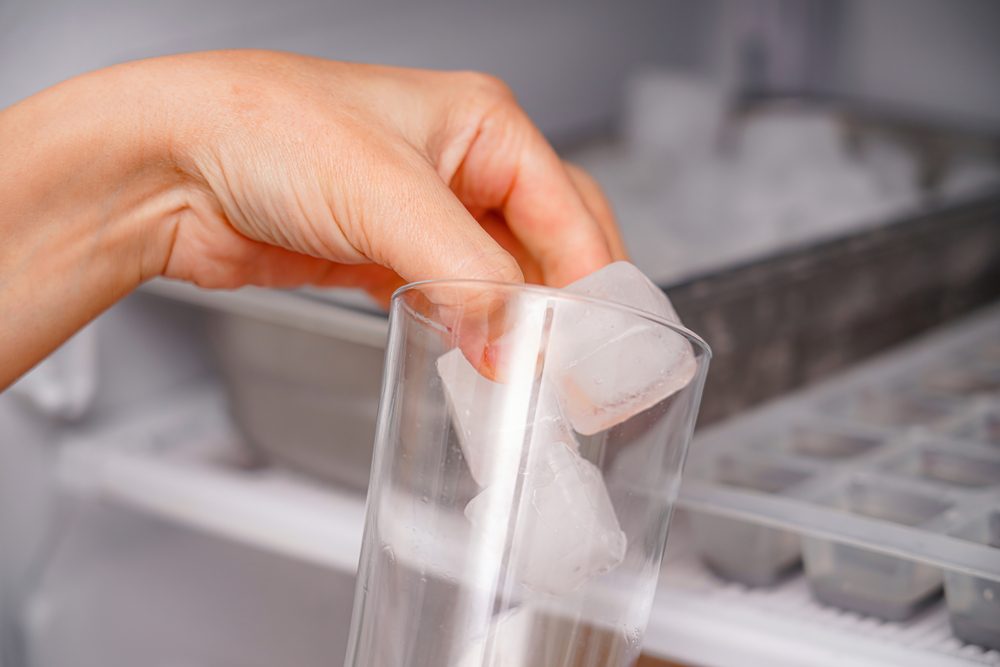There’s nothing better than having a constant supply of ice at your fingertips, especially during a hot day or when hosting guests.
Understanding your ice maker can help you maintain it better, troubleshoot issues, and appreciate the technology that keeps things cool.
Let’s take a closer look at how ice maker works and how it creates perfect ice cubes every time!
Step-by-Step: How Ice Maker Works
Step 1: Water Supply and Filtration
It all starts with water. Your ice maker pulls water directly from your home’s supply line, which is connected to the refrigerator.
Before the water flows into the ice maker, it often passes through a filter to remove impurities. Clean water ensures your ice is clear, tastes fresh, and stays free of unwanted particles.
Step 2: The Ice Mold and Cooling Process
Once the water reaches the ice mold, the real magic happens. The ice mold consists of small trays where the water is evenly distributed. Your refrigerator’s cooling system freezes the water in these trays by circulating cold air or through refrigeration coils.
Sensors monitor the temperature, ensuring the water freezes completely without overworking the appliance.
Step 3: Harvesting the Ice
When the water has turned into solid ice cubes, the ice maker gets to work.
A small heating element activates to warm the base of the ice mold. This loosens the ice, making it easy to eject. The machine’s motor then gently pushes the cubes into the storage bin below, where they’re ready for you to grab.
Step 4: Repeating the Cycle
Once the ice drops into the bin, the process begins again. Sensors check the bin’s level to prevent overproduction, ensuring your ice maker produces just the right amount to meet your needs.
This automated cycle repeats throughout the day, keeping your ice supply steady without any effort on your part.

Common Components That Make It Happen
Several key parts work together seamlessly to produce ice:
- Water Inlet Valve: Controls the flow of water into the ice maker.
- Ice Mold: Holds the water and shapes the ice cubes.
- Thermostat or Sensor: Monitors the freezing temperature.
- Heating Element: Loosens the ice from the mold.
- Storage Bin: Collects the ice cubes until you need them.
When these components work correctly, you get clean, ready-to-use ice.
Why Your Ice Maker Might Stop Working
Despite its efficiency, an ice maker can sometimes run into issues. If your ice maker isn’t producing ice, here are a few common culprits:
- Clogged Water Filters: Over time, filters can become blocked and restrict water flow.
- Faulty Water Supply Line: Leaks or blockages in the supply line can stop water from reaching the mold.
- Malfunctioning Sensors: A faulty thermostat or sensor can disrupt freezing and harvesting cycles.
- Ice Build-Up: Excess ice can jam the ejection mechanism, preventing new cubes from forming.
If you notice any of these issues, addressing them quickly and getting the ice maker repaired done by a professional can help avoid bigger problems down the line.
Keep Your Ice Maker Running Smoothly
To keep your ice maker working efficiently, follow these simple tips:
- Replace your water filter regularly.
- Clean the ice maker and storage bin to prevent residue build-up.
- Check the water line for leaks or clogs.
- Schedule routine inspections to catch potential issues early.
With just a little maintenance, you’ll ensure your ice maker continues to deliver fresh, clean ice whenever you need it.
Enjoy Perfect Ice Every Day – Let the Experts Help
Now that you know how ice maker works, it’s easy to see how important proper maintenance is to keep things running smoothly. If your ice maker isn’t performing as it should, don’t let it disrupt your day.
Contact A Tech Repair Inc. for professional ice maker repairs and maintenance.
Our team will get your appliance back to perfect working order so you can enjoy an uninterrupted supply of ice!



